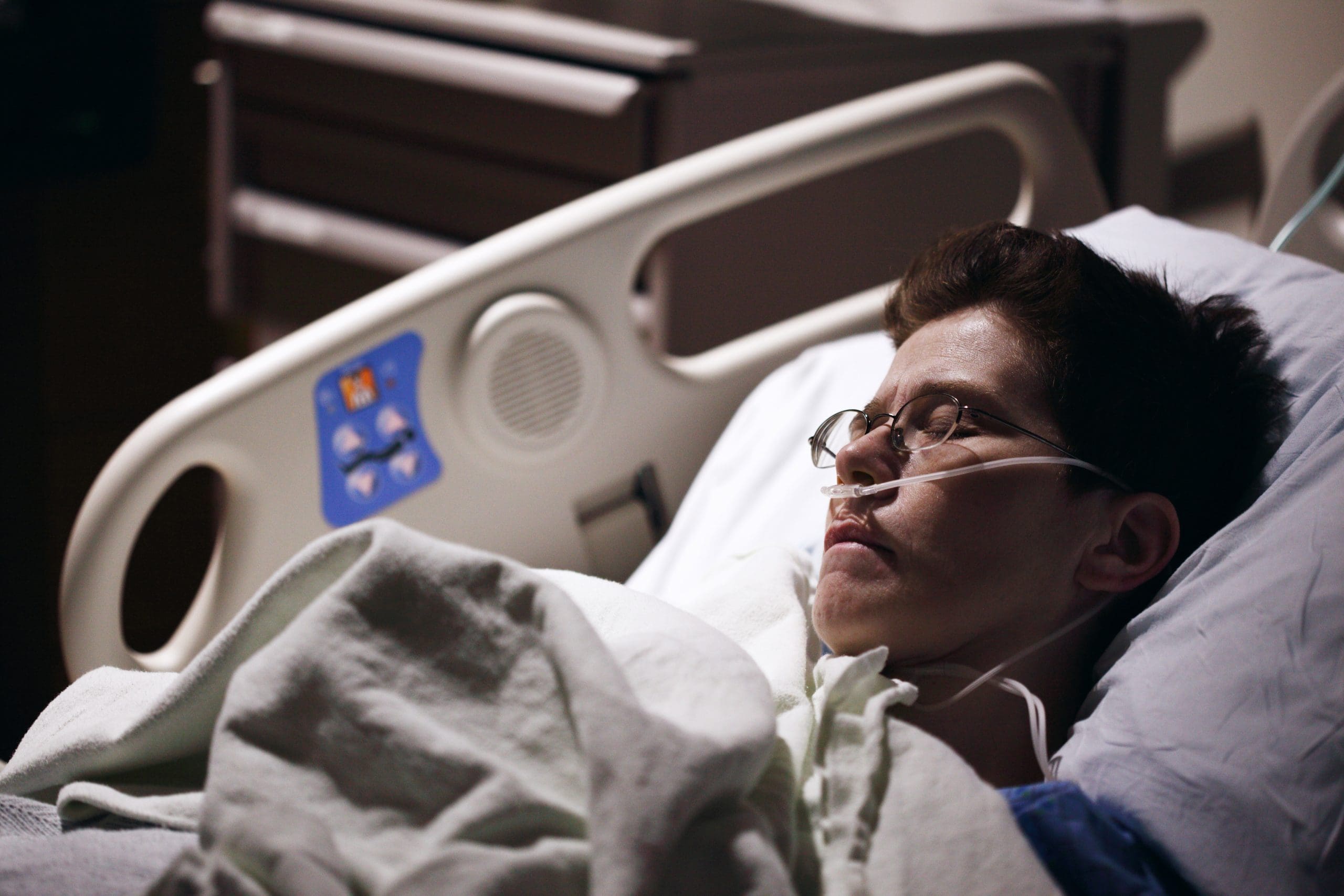John Monroe, age 72, is admitted to the cardiac unit with shortness of breath, chest pain, and fatigue. He has a history of diabetes, hypertension, and myocardial infarction (MI). You place him on a telemetry monitor, administer 2 L oxygen by nasal cannula, and insert a saline-locked I.V. line.
The next morning, an echocardiogram reveals an ejection fraction of 30%, confirming a new diagnosis of heart failure. When Mr. Monroe returns to the unit, he suddenly begins to experience shortness of breath.
History and assessment hints
You find Mr. Monroe sitting on the edge of the bed anxious, tachypneic, and using his accessory and abdominal muscles to breathe. He has a moist cough and is expectorating pink, frothy sputum.
You assess his airway and obtain his vital signs: respiratory rate, 38 breaths/minute; heart rate, 140 beats/minute; blood pressure, 188/92 mm Hg; and oxygen saturation (O2 sat), 88%. You auscultate crackles two-thirds of the way up his chest bilaterally. The telemetry monitor shows sinus tachycardia. Suspecting he might be in acute pulmonary edema (PE), you call the rapid response team (RRT).
On the scene
When the RRT arrives, you summarize your assessment findings. By this time, Mr. Monroe is growing increasingly short of breath and has difficulty speaking. The RRT agrees he is experiencing acute PE, and increases his administered oxygen to 100% by nonrebreather mask. The physician orders furosemide 40 mg I.V., morphine 2 mg I.V., and nitroglycerin 0.4 mg sublingual. She also orders a chest X-ray, a troponin I level, and a 12-lead electrocardiogram (ECG).
After a short time, Mr. Monroe’s breathing starts to improve. His O2 sat rises to 90% and his blood pressure drops to 160/74 mm Hg. As ordered, you place an indwelling urinary catheter; 1,000 mL of urine returns.
Outcome
Mr. Monroe is transferred to the intensive care unit for a continuous nitroglycerin infusion and close respiratory monitoring. His chest X-ray reveals an enlarged heart and diffuse pulmonary infiltrates. His troponin I level is mildly elevated at 0.9 ng/mL; the 12-lead ECG shows no changes. The troponin I elevation without ECG changes most likely stems from the acute stress placed on his heart.
Mr. Monroe continues to improve overnight. His oxygen administration is decreased to 2 L by nasal cannula. His blood pressure returns to baseline as the nitroglycerin infusion is discontinued.
Education and follow-up
Acute PE can occur when fluid shifts abruptly from the pulmonary vasculature to the lung interstitium and alveoli. Possible causes of PE include pneumonia, MI, trauma, toxic chemical inhalation, or (as in Mr. Monroe’s case) heart failure coupled with hypertension. Heart failure is marked by low cardiac output leading to activation of neurohormonal and cardiovascular compensatory mechanisms that increase fluid retention and produce vasoconstriction. Increased volume and pressure on the left ventricle cause backflow into the pulmonary venous system, causing fluid to accumulate in the lungs.
Treatment of PE related to heart failure requires decreasing pulmonary venous fluid overload (preload) and reducing vasoconstriction (afterload). These goals can be achieved with vasodilators (such as nitroglycerin and morphine) and diuretics (such as furosemide). Nitroglycerin dilates veins, reducing cardiac filling pressures and myocardial oxygen demand. At higher dosages, it dilates arterial blood vessels, reducing blood pressure and venous return while optimizing cardiac function. Besides easing anxiety, morphine causes histamine release, resulting in vasodilation. Furosemide, a loop diuretic, removes excess fluid, further decreasing cardiac filling pressures. Together, these medications improve cardiac output by reducing and redistributing volume, which ultimately decreases the heart’s workload.
Heart failure is a chronic disease. To prevent the need for readmission, patients require discharge education on the disease, recommended diet, medications, weight monitoring, and when to call the doctor for symptoms.
Visit www.AmericanNurseToday.com for a complete list of references.
Cindy Ruiz is a Critical Care Clinical Specialist at Northwest Community Hospital in Arlington Heights, Illinois.


















